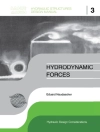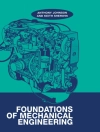The future security, economic growth, and competitiveness of the United States depend on its capacity to innovate. Major sources of innovative capacity are the new knowledge and trained students generated by U.S. research universities. However, many of the complex technical and societal problems the United States faces cannot be addressed by the traditional model of individual university research groups headed by a single principal investigator. Instead, they can only be solved if researchers from multiple institutions and with diverse expertise combine their efforts. The National Science Foundation (NSF), among other federal agencies, began to explore the potential of such center-scale research programs in the 1970s and 1980s; in many ways, the NSF Engineering Research Center (ERC) program is its flagship program in this regard.The ERCs are "interdisciplinary, multi-institutional centers that join academia, industry, and government in partnership to produce transformational engineered systems and engineering graduates who are adept at innovation and primed for leadership in the global economy. To ensure that the ERCs continue to be a source of innovation, economic development, and educational excellence, A New Vision for Center-Based Engineering Research explores the future of center-based engineering research, the skills needed for effective center leadership, and opportunities to enhance engineering education through the centers.
Committee on a Vision for the Future of Center-Based Multidisciplinary Engineering Research & Division on Engineering and Physical Sciences
New Vision for Center-Based Engineering Research [PDF ebook]
New Vision for Center-Based Engineering Research [PDF ebook]
قم بشراء هذا الكتاب الإلكتروني واحصل على كتاب آخر مجانًا!
لغة الإنجليزية ● شكل PDF ● صفحات 102 ● ISBN 9780309459068 ● الناشر National Academies Press ● نشرت 2017 ● للتحميل 3 مرات ● دقة EUR ● هوية شخصية 7145370 ● حماية النسخ Adobe DRM
يتطلب قارئ الكتاب الاليكتروني قادرة DRM












